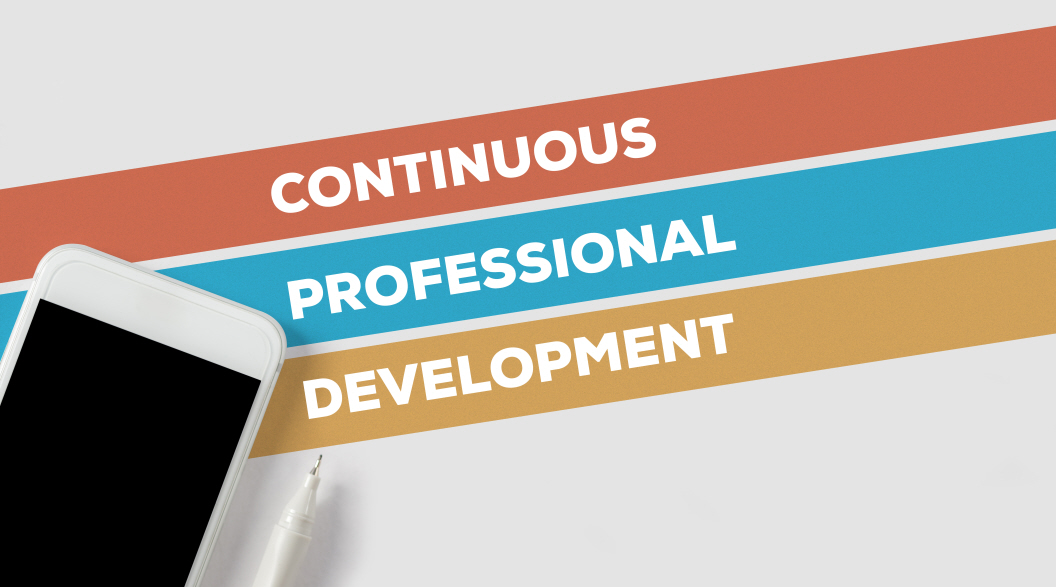In the ever-changing world of work, it is more important than ever to keep your knowledge of the latest developments in your sector, and your skills up to date. So right now is a good time to think about changing your approach to your own CPD. Take stock of your skillset and think about how you can demonstrate up-to-date skills and abilities. By doing so you can improve your performance at work and demonstrate your own commitment to your own continuous professional development and self-improvement journey.
So where should you start? A good definition of Continuous Professional Development (CPD) is that it is the process of tracking and documenting the skills, knowledge, and experience that you gain both formally and informally as you work, beyond any initial training. It’s a record of what you experience, learn, and then apply and it should have an impact on your performance.
However, the reality is that the majority of us don’t adopt this sort of approach toward our CPD. Invariably what many of us are doing is just keeping a list of the events or activities we undertake in order to demonstrate that we’ve undertaken some CPD so it can be pulled out in time for an annual appraisal or Ofsted inspection.
This, however, is not effective CPD and moreover, research demonstrates that most professional development is driven by external factors such as changes in regulations or inspections rather than individual needs and all too often individuals are not in the driving seat in terms of taking responsibility for and guiding their own CPD.
So if you recognise yourself and your approach towards CPD here then perhaps it’s a good time to prioritise your personal development needs for yourself and re-evaluate your approach and start to develop some good habits towards developing yourself. This way you can demonstrate your knowledge, currency, and competence and be ready to deal with the delivery and assessment challenges ahead.
What are the key features of the CPD process?
To justify the name, CPD needs to:
- be a documented process
- be self-directed: driven by you, not your employer
- focus on learning from experience, reflective learning and review
- help you set development goals and objectives
- include both formal and informal learning.
How can you start to improve your approach toward CPD?
Firstly acknowledge that your current practice is flawed, take a deep breath, and open a new page on where you are right now and what you want to achieve.
Benchmark your starting point
You should start your development journey by completing a thorough self-assessment process. To do this you can involve various elements such as:
- A personal SWOT (strengths, weaknesses, opportunities, and threats)
- Reviewing your job role or description and seeing where there might be some gaps
- 360-degree feedback – don’t be afraid to ask for input from colleagues, team members, and your students
- Formal self-assessments
- Current Appraisal
- Individual performance goals
- Evaluation of your own delivery
Planning and Prioritisation
Once you’ve got a clear picture of the areas you need to develop you can start to prioritise your immediate development goals and set yourself some targets.
Think about what you can achieve easily such as simply reading up on the latest version of regulation or piece of legislation.
Ask your manager and colleagues about their development goals and find out if there are some universal needs and how could these be fulfilled.
Are there elements where you could be mentored from within your organisation and share good practices?
Can you build better evaluation processes into your delivery so that you are constantly getting feedback on your performance and incorporate this feedback into your improvement plan?
Start to plan your actions
Make your plan but be realistic and then stick to it. Try hard not to get diverted by either your organisation or other external influences but stay flexible in terms of areas of improvement as jobs can change very quickly sometimes and it’s important to respond to them.
Start to find a trusted source of articles and materials that inform your area of development and build your own CPD library.
Set yourself achievable goals and objectives and start to plan the time you need to accomplish your goals amidst all your other obligations.
Make sure you plan time to evaluate and reflect on all your activities so that you can start to develop a truly meaningful approach toward your professional development. And most importantly enjoy yourself, share what you have learned and use it to enhance your performance, and then evaluate how it’s improved.
When writing this article my thanks go to Melanie Allen for her great article on CPD – An Overview that you can read here.
You can read lots more blog posts on personal and professional development on the Aim Higher Training Blog
Taking control of your CPD can have a real impact on your career path and have faith in yourself. As we all know often our career paths don’t go in a straight line – check out this TED Talk – The best career path isn’t always a straight line.

